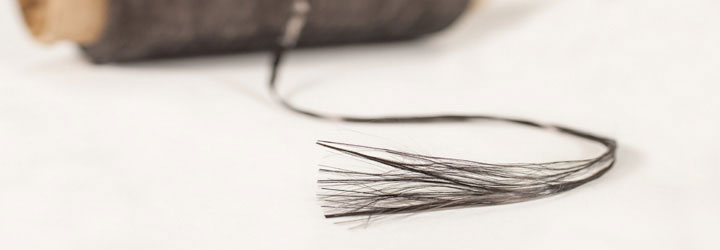To new users of carbon fiber, understanding the properties of carbon fiber is often challenging. To some, it is a mysterious material. This is why we are here.
Zibo Runway Composites is an expert at carbon fiber and composite materials. We understand the materials down the fiber level and we know how best to tailor the carbon fiber design to achieve your needs. And, it is our intent to educate our customers, and the community at large, as best possible, as we strongly believe that the more engineers, designers, students, hobbyists and the public-at-large learn and understand about carbon fiber, the more widespread it's use will become.

Carbon Fiber is Directionally Dependent – Anisotropic
When selecting a carbon fiber product or designing with carbon fiber, one of the most important considerations is knowing the direction of the property of interest. Unlike metals, carbon fiber, and composites in general, are called anisotropic materials. This means the properties of the material are directionally dependent. For an easy analogy, think of a piece of wood. The strength of wood is dependent on the orientation of the grain. This is true with carbon fiber – the strength of the carbon fiber is dependent on the orientation of the fiber (grain). On the other hand, metals, plastics, and most common materials have the same properties in every direction. They are called isotropic materials.
Key Factors in Determining Properties of Carbon Fiber Composites
In addition to being directionally dependent (anisotropic), there are many other factors in determining the properties of carbon fiber. Some of the key factors are:
Type of carbon fiber and resin
Fiber to resin ratio (fiber amount, fiber volume)
Fiber form – unidirectional, fabric, braid, chopped
Fiber orientation – fiber layup design
Quality – Uniformity of fiber distribution, voids, etc
Design Options – Tailored Properties
All of the factors above, or design options, are a unique advantage of carbon fiber and advanced composite materials. A part using carbon fiber can be tailored and designed for a specific application. The fiber type, fiber amount, fiber orientation, etc can all be changed to achieve certain properties, whether for mechanical reasons (strength, stiffness) or for other reasons, such as low CTE (coefficient of thermal expansion). Metals and other materials do not have this tailor ability. For example, on a metal part, the only thing that can be changed is the grade or alloy of metal and it's thickness or shape. That's it.
Because there are literally thousands and thousands of options when it comes to carbon fiber, it is impossible to list and explain all of the potential properties of carbon fiber.
Contact our team of carbon fiber experts to design a solution for your specific application.
+86 13275331467
Science & Technology Industrial Park, Zhangdian, Zibo, Shangdong, China